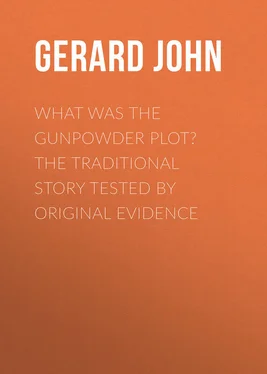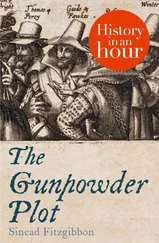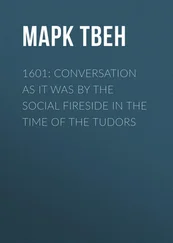John Gerard - What was the Gunpowder Plot? The Traditional Story Tested by Original Evidence
Здесь есть возможность читать онлайн «John Gerard - What was the Gunpowder Plot? The Traditional Story Tested by Original Evidence» — ознакомительный отрывок электронной книги совершенно бесплатно, а после прочтения отрывка купить полную версию. В некоторых случаях можно слушать аудио, скачать через торрент в формате fb2 и присутствует краткое содержание. Жанр: foreign_antique, foreign_prose, на английском языке. Описание произведения, (предисловие) а так же отзывы посетителей доступны на портале библиотеки ЛибКат.
- Название:What was the Gunpowder Plot? The Traditional Story Tested by Original Evidence
- Автор:
- Жанр:
- Год:неизвестен
- ISBN:нет данных
- Рейтинг книги:5 / 5. Голосов: 1
-
Избранное:Добавить в избранное
- Отзывы:
-
Ваша оценка:
- 100
- 1
- 2
- 3
- 4
- 5
What was the Gunpowder Plot? The Traditional Story Tested by Original Evidence: краткое содержание, описание и аннотация
Предлагаем к чтению аннотацию, описание, краткое содержание или предисловие (зависит от того, что написал сам автор книги «What was the Gunpowder Plot? The Traditional Story Tested by Original Evidence»). Если вы не нашли необходимую информацию о книге — напишите в комментариях, мы постараемся отыскать её.
What was the Gunpowder Plot? The Traditional Story Tested by Original Evidence — читать онлайн ознакомительный отрывок
Ниже представлен текст книги, разбитый по страницам. Система сохранения места последней прочитанной страницы, позволяет с удобством читать онлайн бесплатно книгу «What was the Gunpowder Plot? The Traditional Story Tested by Original Evidence», без необходимости каждый раз заново искать на чём Вы остановились. Поставьте закладку, и сможете в любой момент перейти на страницу, на которой закончили чтение.
Интервал:
Закладка:
Such was the position to be attacked. As a first step, the conspirators resolved to hire a house in the immediate neighbourhood, to serve them as a base of operations. Thomas Percy was selected to appear as the principal in this part of the business, for, being one of the king's pensioners, he had frequently to be in attendance at Court, and might naturally wish to have a lodging close at hand. The house chosen was one, or rather a part of one, 134 134 Cecil wrote to Cornwallis, Edmondes, and others, November 9th, 1605, "This Piercey had a bout a year and a half a goe hyred a parte of Vyniards house in the old Palace," which appears to be Mr. Hepworth Dixon's sole authority for styling the tenement "Vinegar House."
standing near the Prince's Chamber, and on the side towards the river. 135 135 See Appendix E, Site of Percy's house .
In treating for the lease of this tenement Percy seems to have conducted himself in a manner altogether different from what we might have expected of one whose object required him, above all, to avoid attracting notice. He appears, in fact, to have made the greatest possible ado about the business. The apartments were already let to one Ferrers, who was unwilling to give them up, and Percy eventually succeeded in his purpose, after not only "long suit by himself," but also "great intreaty of Mr. Carleton, Mr. Epsley, and other gentlemen belonging to the Earl of Northumberland." 136 136 Evidence of Mrs. Whynniard, November 7th, 1605. Epsley is evidently the same person as Hoppisley, who was examined on the 23rd of the same month.
These gentlemen were never said to have been privy to the Conspiracy, and one of them, the well-known Dudley Carleton, afterwards Viscount Dorchester, was not only at this time secretary to Sir Thomas Parry, the Ambassador in France, but was "patronised" by Cecil himself. 137 137 Birch, Historical View , p. 227.
Neither does the house appear to have been well suited to serve the purposes for which it was taken. Speed tells us, 138 138 Historie , p. 1231.
and he is confirmed by Bishop Barlow of Lincoln, 139 139 Gunpowder Treason, Harleian Miscellany , iii. 121.
that it was let out to tenants only when Parliament was not assembled, and during a session formed part of the premises at the disposal of the Lords, whom it served as a withdrawing room. As the Plot was, of necessity, to take effect during a session, 140 140 At his first examination, November 5th 1605, Faukes declared that he had not been sure the king would come to the Parliament House on that day, and that his purpose was to have blown it up whenever his Majesty was there.
when the place would thus be in other hands, it is very hard to understand how it was intended that the final and all important operation should be conducted.
The bargain for the house was concluded May 24th, 1604, 141 141 The agreement between Percy and Ferrers is in the Record Office ( Gunpowder Plot Book , 1.) and is endorsed by Cecil, "The bargaine … for the bloody sellar." Upon this there will be more to remark later.
but the proposed operations were delayed till a much later date, by a circumstance which clearly shows the public nature of the premises, and that the lease obtained conferred no exclusive right of occupation. The question of a union with Scotland, for which King James was very anxious, was at the time being agitated, and commissioners having been appointed to discuss it, this very house was placed at their disposal for their meetings. Consequently the summer and autumn passed without any farther steps being taken by the conspirators.
At last, in December, they were free to take in hand the extraordinary scheme they had matured. This was, starting from a cellar of Percy's house, 142 142 Jardine, Gunpowder Plot , p. 42.
to dig thence an underground mine to the foundations of the Parliament House, and through them; and then to construct within, beneath the Peers' Chamber itself, a "concavity" large enough to contain the amount of powder requisite for their purpose. On December 11th, 1604, they commenced operations, 143 143 The 11th of December, O.S., was at that period the shortest day, which circumstance suggested to Sir E. Coke, on the trial of the conspirators, one of his characteristic facetiæ; he bade his hearers note "That it was in the entring of the Sun into the Tropick of Capricorn, when they began their Mine; noting that by Mining they should descend, and by Hanging, ascend."
and in a fortnight, that is by Christmas, they had tunnelled from their starting-point to the wall they had to breach; and that this first operation was of no small magnitude, especially for men who had never before handled pick or shovel, 144 144 "Gentlemen not accustomed to labour or to be pioneers." – Goodman, Court of King James , p. 103.
is shown by the fact that what they contrived to do in so short a time was quoted as evidence of the extraordinary zeal they displayed in their nefarious enterprise. 145 145 "The Moles that first underwent these underminings were all grounded Schollers of the Romish Schoole, and such earnest Labourers in their Vault of Villany, that by Christmas Eve they had brought the worke under an entry, unto the Wall of the Parliament House, underpropping still as they went the Earth with their framed Timber." – Speed, Historie , p. 1232 (pub. 1611).
Having rested a little, for the Christmas holidays, they began upon the wall, which presented an unexpected obstacle. They found that it was not only "very hard to beat through," but, moreover, nine feet thick, though since, as we shall see, they never penetrated to the other side, it is not clear how they were able to measure it. 146 146 In Barlow's Gunpowder Treason these foundations are stated to have been three ells thick, i. e. , eleven and a quarter feet. Harleian Miscellany , iii. 122.
Up to this point but five persons had engaged in the work, Catesby, Percy, Thomas Winter, John Wright, and Faukes. In consequence however of the difficulties now experienced, Keyes was called in to their aid. He had already been initiated in the Plot, and appointed to take charge of the powder, which was being accumulated and stored in a house hired for the purpose across the Thames, at Lambeth. It was therefore necessary to bring over the powder with him, which amounted at this time to twenty barrels, and was placed either in Percy's lodging itself, or in an outhouse belonging to it. About the same time Christopher Wright was also initiated and took his share of the labour. 147 147 See Appendix F, The enrolment of the Conspirators , for the discrepancies as to dates. T. Winter (November 23rd, 1605) says that the powder was laid "in Mr. Percy's house;" Faukes, "in a low Room new builded."
The gang thus composed laboured upon the wall from the beginning of January, 1604-5, to the middle of March, 148 148 There is, as usual, hopeless contradiction between the two witnesses upon whom, as will be seen, we wholly depend for this portion of the story. Faukes (November 17th, 1605) makes the mining operations terminate at Candlemas. T. Winter (November 23rd) says that they went on to "near Easter" (March 31st). The date of hiring the "cellar," was about Lady Day (March 25th).
by which time they had succeeded in getting only half way through. While the others worked, Faukes stood on sentry to warn them of any danger.
Meanwhile, it must be asked how proceedings so remarkable could have escaped the notice, not only of the government, but of the entire neighbourhood. This, it must be remembered, was most populous. There were people living in the very building, a part of which sheltered the conspirators. Around, were thickly clustered the dwellings of the keeper of the Wardrobe, auditors and tellers of the Exchequer, and other such officials. 149 149 The buildings of the dissolved College of St. Stephen, comprising those around the House of Lords, were granted by Edward VI. to Sir Ralph Lane. They reverted to the crown under Elizabeth, and were appropriated as residences for the auditors and tellers of the Exchequer. The locality became so populous that in 1606 it was forbidden to erect more houses.
There were tradespeople and workmen constantly employed close to the spot where the work was going on; while the public character of the place makes it impossible to suppose that tenants such as Percy and his friends, who were little better than lodgers, could claim the exclusive use of anything beyond the rooms they rented – even when allowed the use of these – or could shut against the neighbours and visitors in general the precincts of so much frequented a spot.
Интервал:
Закладка:
Похожие книги на «What was the Gunpowder Plot? The Traditional Story Tested by Original Evidence»
Представляем Вашему вниманию похожие книги на «What was the Gunpowder Plot? The Traditional Story Tested by Original Evidence» списком для выбора. Мы отобрали схожую по названию и смыслу литературу в надежде предоставить читателям больше вариантов отыскать новые, интересные, ещё непрочитанные произведения.
Обсуждение, отзывы о книге «What was the Gunpowder Plot? The Traditional Story Tested by Original Evidence» и просто собственные мнения читателей. Оставьте ваши комментарии, напишите, что Вы думаете о произведении, его смысле или главных героях. Укажите что конкретно понравилось, а что нет, и почему Вы так считаете.












